- Rare Plant Rank 1B.2 – California Native Plant Society
- T2 Imperiled – NatureServe (2015)
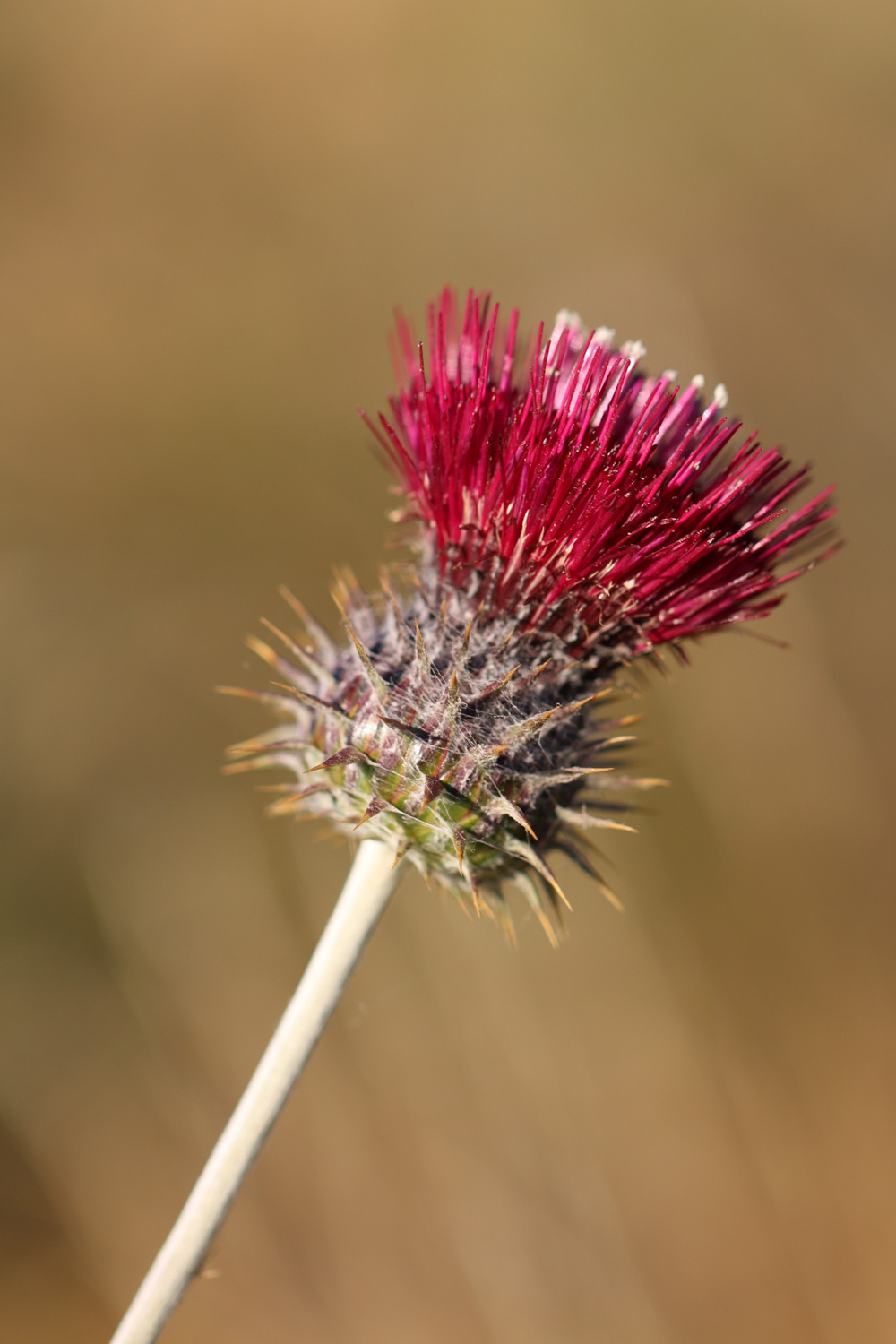
The Cirsium genus is the most diverse thistle genus in North America and one of the continent’s evolutionary success stories. Many of these native thistle species are endemic and bound to a specific ecological region, with the Cuesta Ridge thistle being no exception.
This species is a recognized variety of the Cobweb thistle (Cirsium occidentale), a widespread and common species across most of California. Unlike its parent however, the Cuesta Ridge thistle is endemic and restricted to only a narrow corridor along and adjacent to the main ridge of the southern Santa Lucia Mountains.
This narrow eight-mile ridgetop strip of national forest land, known as Cuesta Ridge, is home to several rare plant species. In fact, another Cirsium species variation, the San Luis Obispo fountain thistle, is only known to inhabit about ten niche habitat locations nearby within San Luis Obispo county. However, unlike the San Luis Obispo fountain thistle which is protected as an endangered species under the Endangered Species Act, the Cuesta Ridge thistle is not a listed species despite both species sharing imperiled populations and same rank under the California Rare Plant Ranking System.
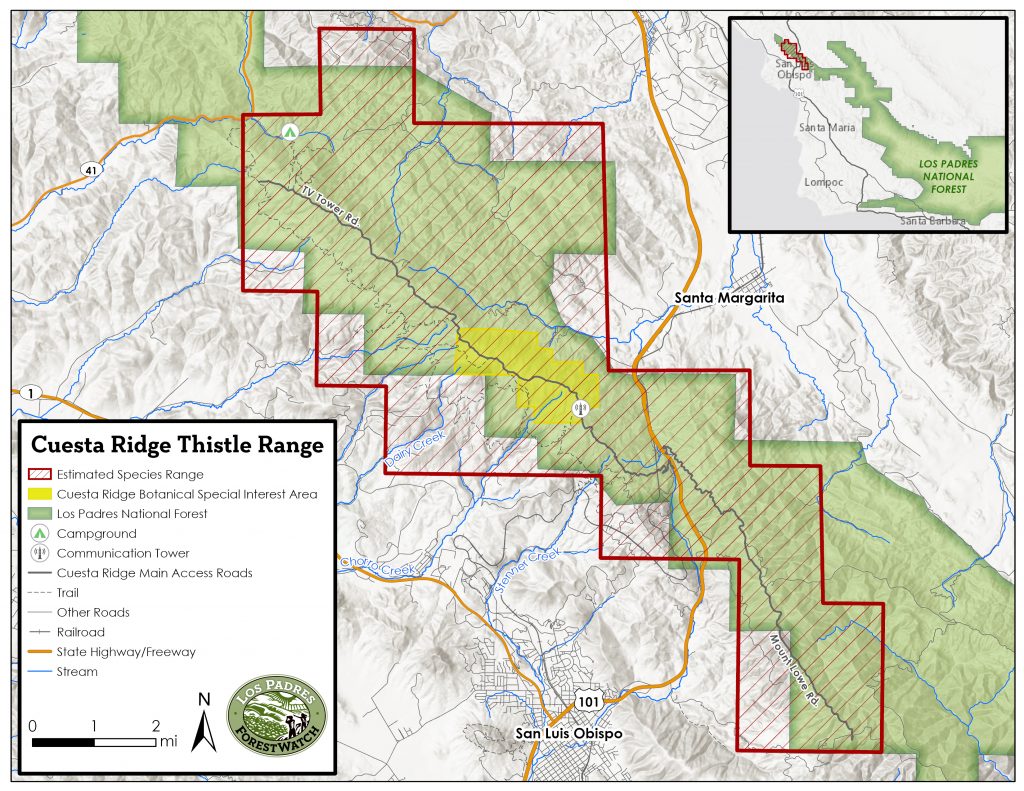
Those few lucky enough to observe the species will most likely find it flowering in early summer within the coastal chaparral, rocky slopes, and Sargent cypress conifer forests of the Cuesta Ridge Botanical Special Interest Area. This serpentine chaparral habitat within the Los Padres National Forest is home to a number of serpentine endemic species including wavy leaf ceanothus, Cuesta Pass checkerbloom, serpentine manzanita, San Luis sedge, and the San Luis mariposa lily.
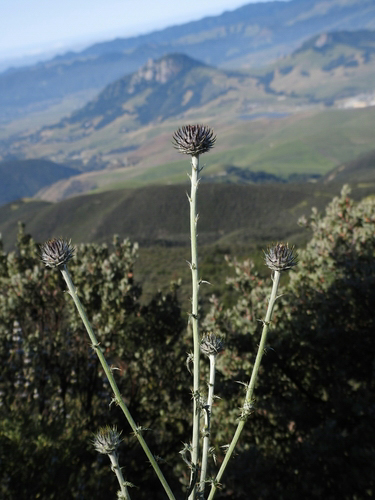
Prior to 2019, the Cuesta Ridge thistle was known from fewer than 10 occurrences on Cuesta Ridge (CNDDB records 2019), although several recent discoveries have been made in 2019 and 2020 along West Cuesta Ridge. The thistle stands erect between 12-80 inches tall with the plant head (capitulum) well above its lower leaves. Its cobwebby involucres are between 2-4 centimeters in diameter with dark purplish red corollas growing 20-24 millimeters tall. The species can resemble the small-headed plants of the California thistle, another variation of Cirsium occidentale also endemic to California, but differ in their dark, reddish purple corollas and darkly pigmented involucres. The two species are not known to grow near one another.
Threats
Due to its low population numbers and restricted range the Cuesta Ridge thistle is highly susceptible to several threats. Wildfires are a hazard of major concern in San Luis Obispo County given that the region is “one of the worst fire environments in the State of California for large damaging wildfires.” When factoring in climate change, model projections show a doubling in area burned within the county by 2035-45. Much of where the thistle is known to exist are within Fire Hazard Severity Zones classified as high to very high.
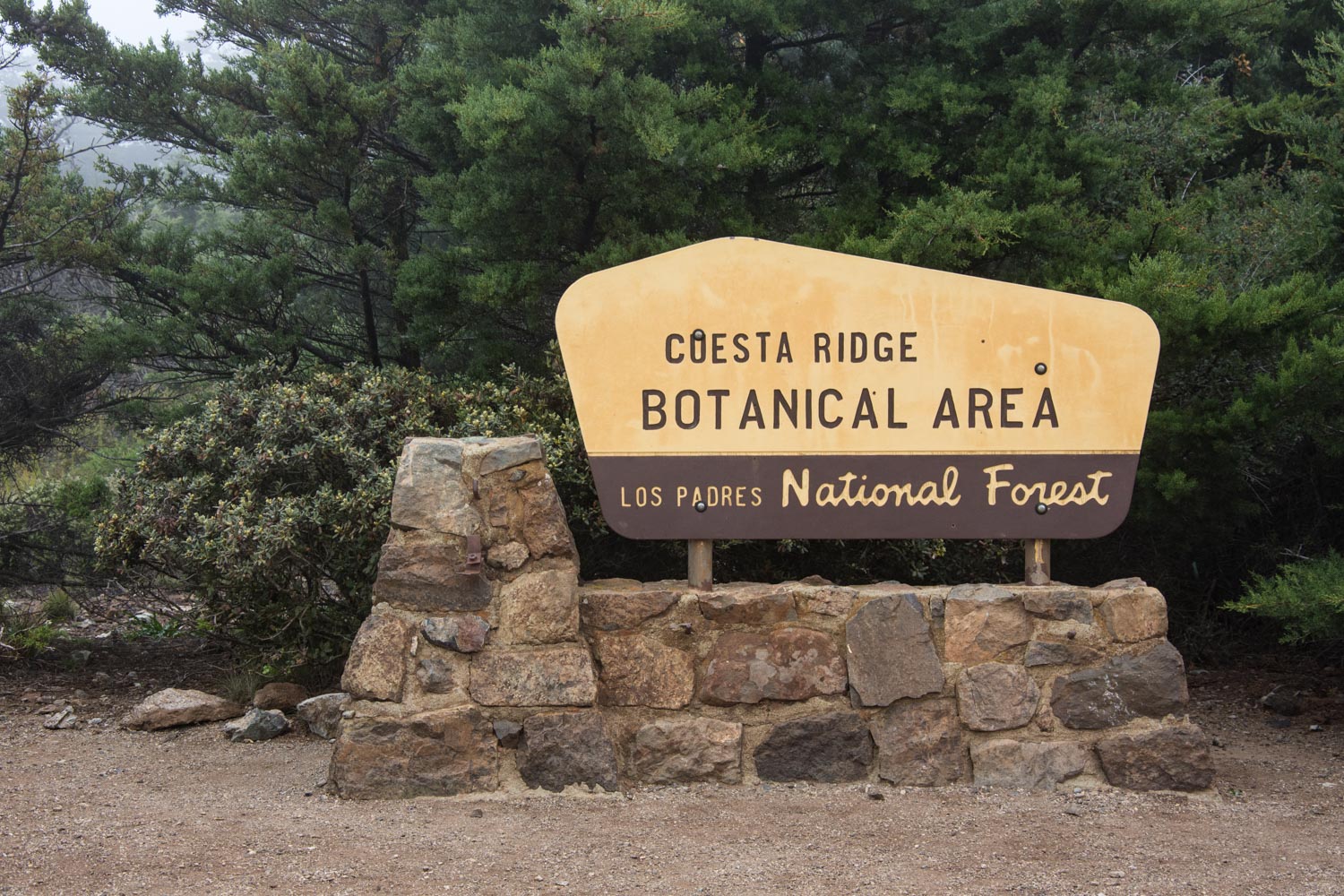
The Cuesta Ridge Botanical Area, a popular destination for recreationists and critical habitat for the species, continues to be impacted every year by unfettered dispersed camping which often results in trashed out sites and illegal fire rings — a dangerous activity along a windy ridgetop covered in chaparral. Additional threats from illegal motorized use and unsanctioned trail construction in the area can jeopardize individual plants and further reduce the species already narrow habitat corridor.
Conservation
Currently, the Los Padres National Forest is conducting an environmental analysis on the West Cuesta Sustainable Trail Development and Botanical Area Restoration Project. The proposed project aims to improve resource conditions and protect the Cuesta Botanical Special Interest Area on West Cuesta Ridge while providing sustainable managed recreation activities. This project aims mitigate some of the threats brought on by increased recreational use in the species core habitat. ForestWatch is actively participating in the project development process to ensure that protection of unique plants such as the Cuesta Ridge thistle are prioritized.
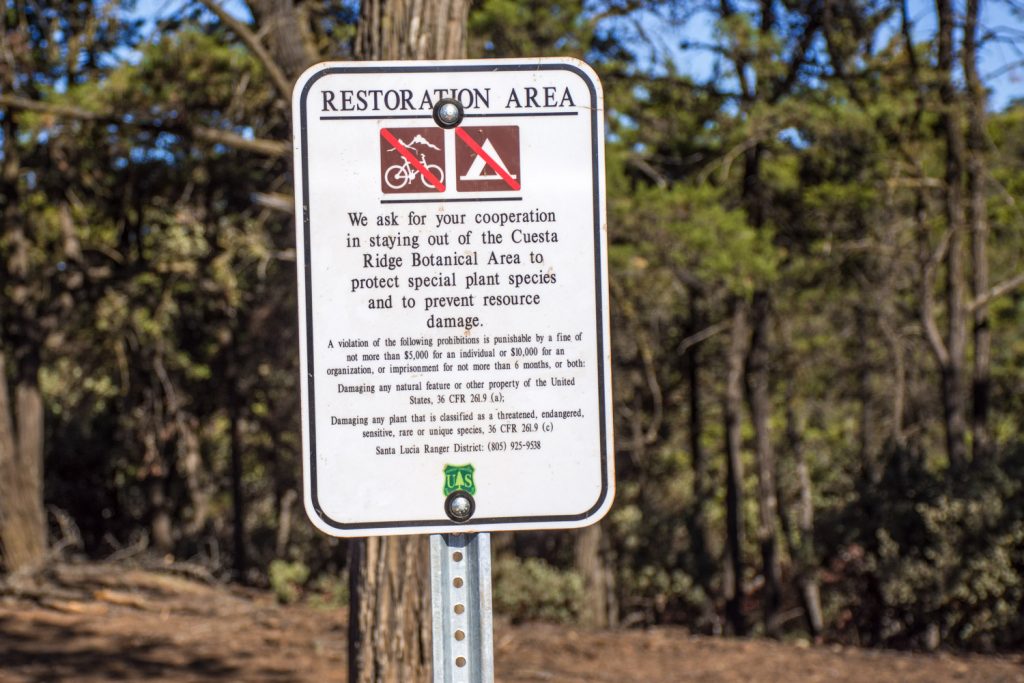
ForestWatch is also working toward submitting a request to the Forest Service to list the Cuesta Ridge thistle as a “Sensitive Species” in the Los Padres National Forest. Placement on the sensitive species list will help address threats facing the species and prevent further declines. The addition of this thistle to the Los Padres National Forest sensitive species list will help protect populations in the forest by confirming that any potential impacts to the thistle or its habitat are evaluated and mitigated.






